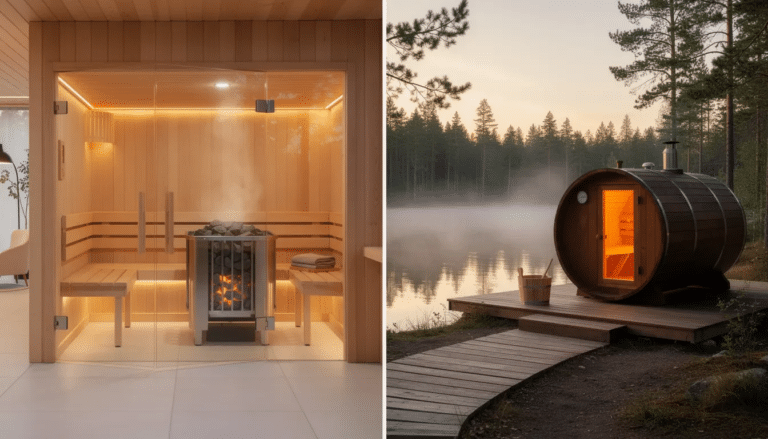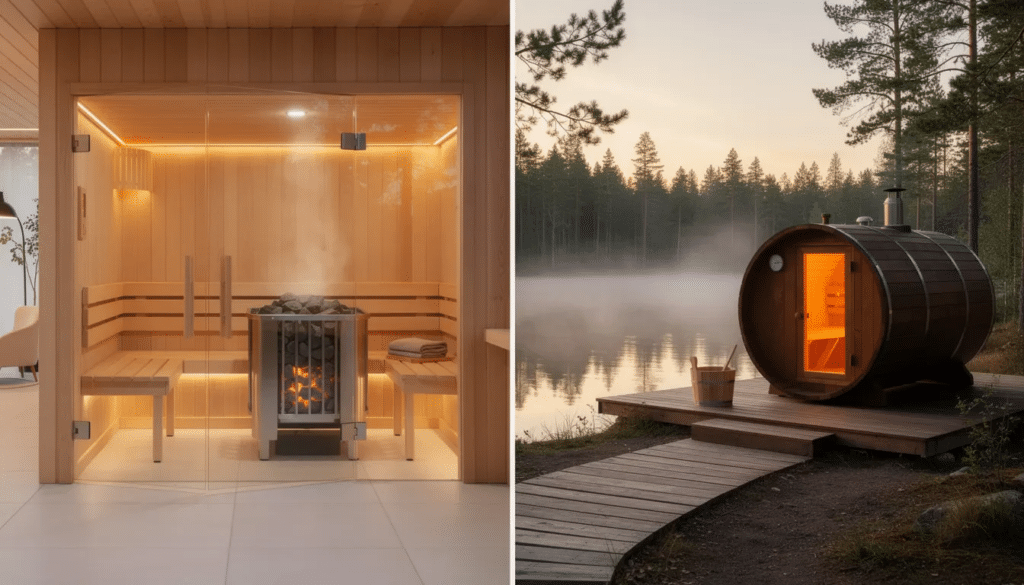Summer’s here, and the kids are bouncing off the walls already.
You’re probably wondering how to keep them busy without losing your sanity. Here’s the thing: a good summer schedule for kids doesn’t have to be complicated. It just needs to work for your family.
Think of it as your summer survival idea. We’re talking about creating structure that sticks, mixing fun with learning, and yes, even sneaking in some downtime for yourself. Because let’s be honest, you need it too.
Get ready to turn those long summer days into something everyone can enjoy. Let’s get started.
The Significance of a Summer Routine
Kids grow on predictability, even when school’s out. A solid summer schedule for kids provides them with the anchor they need while still leaving room for adventure.
Without some structure, those endless days can feel overwhelming for children. They’ll know what to expect, and that sense of security helps them feel more confident about trying new things.
The dreaded “summer slide” is a real phenomenon, where children can lose months of academic progress. But a thoughtful routine keeps their minds active without feeling like homework. Consider activities like reading time, educational games, or even cooking together.
Routines naturally teach kids to manage their own time. They’re building life skills without even knowing it.
How to Design a Common Flexible Daily Framework for All Ages

Creating a summer routine doesn’t mean rigid timelines; it’s about building a rhythm that provides both structure and breathing room. Here’s a balanced breakdown of a flexible day that supports learning, play, and connection.
Step 1: Set Shared Daily Anchors
Start by identifying the non-negotiables or universal activities that form the foundation of everyone’s day.
- Standard anchors: Wake-up, breakfast, lunch, dinner, quiet time, bedtime
- Keep these consistent in order, not by the clock
- Adjust exact times to suit family rhythm
Why it works: Predictable anchors offer emotional security and alleviate decision fatigue for both children and adults.
Step 2: Create Broad Time Blocks, Not Rigid Schedules
Divide the day into flexible 2–3 hour blocks with themes, rather than micromanaged time slots.
- Morning (7–10 AM): Wake-up, hygiene, breakfast, light movement
- Late Morning (10–12 PM): Learning activities or chores
- Midday (12–2 PM): Lunch, quiet rest, or screen-free time
- Afternoon (2–5 PM): Outdoor play, creative time, social playdates
- Evening (5–8 PM): Dinner, family bonding, free time
- Night (8–9 PM): Calm-down routine, stories, bedtime
Why it works: Blocks provide rhythm while allowing flexibility for varying energy levels, weather conditions, and moods.
Step 3: Include Daily Activity Categories for All Ages
Ensure each day touches on these 5 core pillars, structured by age:
- Movement – Bike ride, yoga, sports, dancing
- Creativity – Drawing, crafts, music, building
- Learning/Focus – Reading, workbooks, puzzles, projects
- Rest & Reflection – Nap, reading corner, journaling, quiet time
- Social/Connection – Meals together, chats, family games
Why it works: Balanced activity types stimulate body, brain, and emotions across all ages.
Step 4: Build Parallel Activities for Different Age Groups
Design time blocks where everyone engages in their version of a shared theme.
Focus Time:
- Kids: coloring or sensory play
- Teens: journaling or reading
- Adults: emails or planning
Creative Time:
- Kids: crafts or LEGO
- Teens: design, digital art
- Adults: gardening, DIY, or photography
Why it works: Parallel play models productivity and builds a sense of shared purpose.
Step 5: Schedule Connection Points
Build in intentional family time; these don’t need to be long, but should be regular.
- Family meals (at least lunch or dinner together)
- Mid-afternoon snack break
- Evening walk, game, or group clean-up
- Weekend “mini-adventure” like a picnic or hike
Why it works: Shared rituals help strengthen family bonds and prevent tech overload.
Step 6: Add 1–2 “Flex Zones” Per Day
Include built-in time where each family member chooses what they need most: freedom, rest, play, or solo time.
- Usually placed after high-energy or focus periods
- Helps prevent meltdowns, boredom, and resistance
Why it works: Honoring autonomy boosts cooperation and emotional regulation.
Step 7: Use a Visual Family Routine Chart
Make the routine visible and accessible to everyone.
- Use icons and colors for young kids
- Teens can use apps or printed planners
- Place the chart in a central spot, like the kitchen or hallway
- Consider magnets, dry-erase boards, or Velcro schedules
Why it works: Visuals reduce nagging, reinforce independence, and build accountability.
Step 8: Reflect and Adjust Weekly
At the end of each week, reflect together:
- What worked well?
- What felt too rushed or too long?
- What should we add, change, or remove?
Why it works: Involving kids in the process builds ownership and makes routines feel empowering, not controlling.
Weekly Themes to Spark Engagement
Themed weeks enable creative learning, balanced exploration, and numerous memorable moments.
STEM Week:
It is all about sparking curiosity through science, technology, engineering, and math. Whether it’s baking soda volcanoes, coding games, or building marshmallow towers, kids love learning when they don’t realize they’re doing it.
Nature Explorers Week:
It encourages kids to step outside and connect with the environment. Plan activities like a backyard scavenger hunt, leaf rubbings, bug watching, or simply cloud-gazing with a sketchpad in hand.
Around the World Week:
It changes your home into a global adventure. Pick a country each day to explore through food, stories, crafts, and music. Create “passports” and stamp them after each cultural journey to make the experience feel immersive.
Art Attack Week:
It invites colorful chaos. Set up daily creative challenges: try tie-dye, paint murals, make puppets, or sculpt with homemade clay. Let the process matter more than the product; this is about self-expression, not perfection.
Retro Games Week:
It throws it back to simpler fun. Introduce your kids to the classics: hopscotch, jump rope, four square, or Duck, Duck, Goose. Host a family game show night or a dance party with your favorite ‘80s and ‘90s jams.
Sample Summer Schedules for Kids by Age Group
Every age comes with its own set of needs, energy levels, and attention spans. That’s why a one-size-fits-all summer schedule rarely works.
Here’s how to structure daily routines based on your child’s developmental stage, so everyone stays engaged, rested, and happy.
Preschoolers (Ages 3–5)
Preschoolers grow with predictable rhythms and short, engaging activity bursts.
Their days should feel playful, safe, and flexible, with plenty of downtime. Most still need naps or rest periods, so a summer schedule that honors their need for quiet helps prevent overstimulation.
| Time | Activity | Details |
|---|---|---|
| 8:00 AM | Wake up & breakfast | Gentle wake-up, freshen up, brushing teeth, getting dressed, and a Simple, nutritious breakfast (e.g., oatmeal, fruit, milk). |
| 9:00 AM | Free play or outdoor time | Independent or parallel play (blocks, dolls, toy cars, books, sensory bins) |
| 10:00 AM | Simple craft or sensory activity | Backyard play, park visit, water table, bubble fun, nature walk, scooter or trike riding |
| 11:00 AM | Storytime or music & movement | Parent reads stories aloud or uses finger puppets; child can help with storytelling |
| 12:00 PM | Lunch | Sit-down family lunch with conversation or simple music |
| 1:00–3:00 PM | Nap or quiet time | Nap in bed or have quiet time in a room with books, stuffed animals, or calm music |
| 3:00 PM | Snack & light activity (puzzles, block play) | Light snack (juice, mini sandwiches, fruit), slow wake-up with cozy setting |
| 4:30 PM | Outdoor time or water play | Splash pad, sprinkler, sandbox, or indoor obstacle course if it’s too hot outside |
| 6:00 PM | Calm Play / Books | Puzzle, snuggles, soft music, simple games like matching cards or looking at picture books |
| 7:00 PM | Dinner & Bedtime Routine | Family dinner and the Child sleeps |
Download Preschoolers (Ages 3–5) Timetable Printable Here
Elementary Kids (Ages 6–9)
Children in this age range are developing a sense of independence but still require structure to grow.
They’re ready for longer blocks of focused activity and can handle tasks like reading, helping with chores, or small learning projects. Just be sure to set screen time limits upfront to avoid constant negotiations.
| Time | Activity | Details |
|---|---|---|
| 8:00 AM | Wake up & morning routine | Morning routine, hygiene, and a healthy meal |
| 9:00 AM | Learning block (reading, journaling, or workbook) | Reading, writing, journaling, or educational games/apps |
| 10:00 AM | Creative time (LEGO, art, pretend play) | Art, crafts, LEGO, or building projects |
| 11:30 AM | Active outdoor play or a physical game | Bike riding, park, backyard play, or sports |
| 12:30 PM | Lunch | Family lunch + unstructured indoor play |
| 1:00 PM | Screen time or independent play | Educational shows, games, or movies (with limits) |
| 2:30 PM | Quiet time | Reading, puzzles, audiobooks, or rest |
| 4:00 PM | Free play or themed weekly activity | Sprinkler, sandbox, water balloons, or science experiments |
| 6:00 PM | Dinner & family time | Help prep dinner, eat together, chat, or play a game |
| 7:00 PM | Wind-Down & Bedtime | Bath, pajamas, reading, and lights out |
Download Elementary Kids (Ages 6–9) Timetable Printable Here
Tweens (Ages 10–12)
At this stage, tweens crave autonomy and want to feel capable. Their schedules can include more self-directed activities, personal projects, or community involvement.
Support their growth by encouraging them to take ownership of their time, but maintain a flexible routine to avoid prolonged screen marathons.
| Time | Activity | Details |
|---|---|---|
| 8:30 AM | Wake up & self-guided morning routine | Morning routine + nutritious breakfast |
| 9:30 AM | Personal project, reading, or creative work | Reading, journaling, chores, or hobby development |
| 11:00 AM | Chores or helping with siblings | Contribute to the household by doing age-appropriate chores or assisting younger siblings with simple tasks or play. |
| 12:30 PM | Lunch | Eat, relax, or have light conversation |
| 1:00 PM | Physical activity (biking, sports, yoga) | Biking, sports, fitness app, or outdoor games |
| 2:30 PM | Skill challenge or community project (gardening, art, etc.) | Engage in hands-on activities like gardening, crafts, or small community projects to build skills and purpose. |
| 4:00 PM | Screen Time | Games, shows, or tech projects (with limits) |
| 6:00 PM | Free Time | Friends, board games, texting, or solo fun |
| 7:00 PM | Dinner | Help with dinner, eat together, and family activity |
| 8:00 PM | Bedtime | Showers, books, calm music, or light screen use |
Download Tweens (Ages 10–12) Timetable Printable Here
Tips to Keep It Going All Summer Long
The most brilliant summer schedule for kids is useless if it’s ignored on your fridge. You need strategies that work in real life, with real kids who have their own opinions about everything.
- Grab some printable charts or use a simple whiteboard that everyone can see.
- Color-code different activities, blue for learning, green for outdoor fun.
- Let them help create it so they feel a sense of ownership over their day.
- Build in “buffer zones” between activities – kids need transition time.
- Follow the 80/20 rule; allocate 80% of your time to structure and leave 20% open.
- Make Simple sticker charts, which still work wonders for younger kids
- Create milestone moments, like a special treat after completing a week
Conclusion
Summer doesn’t have to feel like a juggling act between chaos and structure.
With a bit of planning and a lot of flexibility, you can create a summer schedule for kids that works for your child’s age, your schedule, and everyone’s sanity.
Whether it’s themed weeks, nap-friendly routines, or just knowing when to hand them a boredom buster, a thoughtful summer schedule gives kids the freedom to explore while offering parents a sense of calm.
So, customize what works, skip what doesn’t, and some of the best summer moments happen between the scheduled blocks.


















